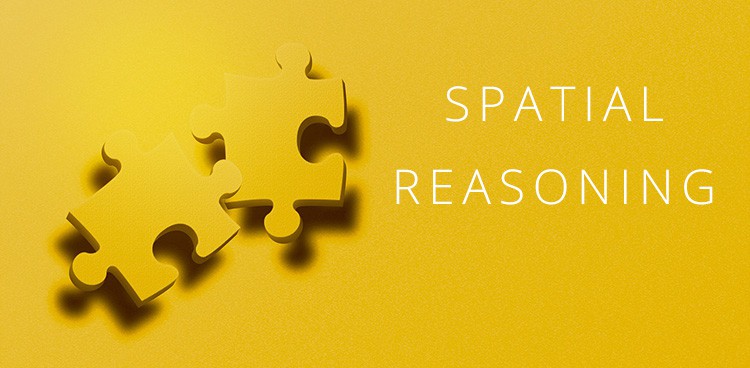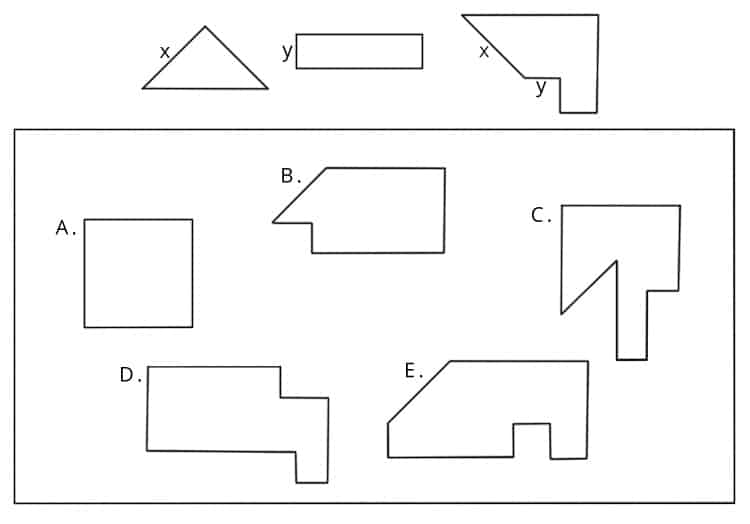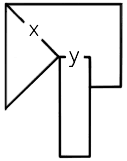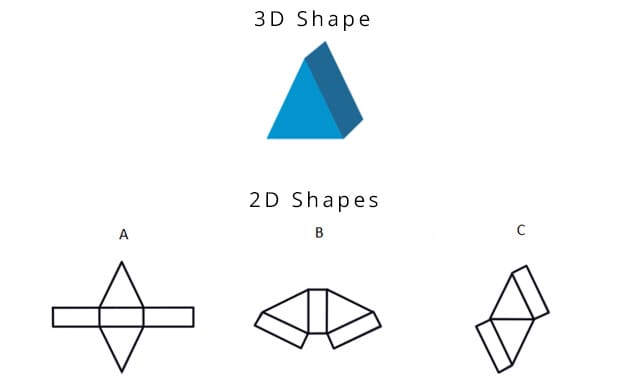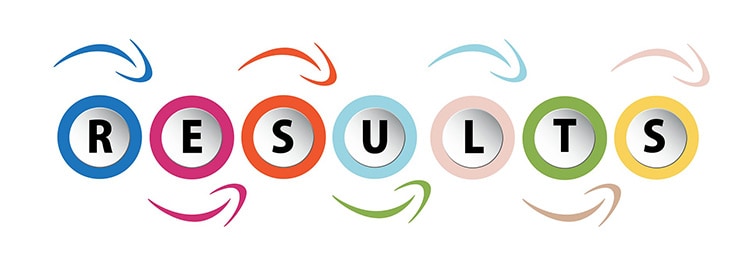Spatial Reasoning Test Guide 2023
Applying for a technical or military role? You’ll likely take a spatial reasoning test as part of the selection process.
Keep reading to find out exactly what this particular aptitude test is, and everything you need to know to ace it!
In this free spatial reasoning test guide we will show you:
- What to expect in a spatial reasoning test
- Example test questions and how to solve them
- 5 steps to test success
You can find some of the best tailored spatial reasoning practice tests here.
What is a spatial reasoning test and what is it used for?
Spatial reasoning tests measure your ability to visualise, manipulate and find patterns in two and three-dimensional shapes.
This is also known as your visuospatial ability, and it shows potential employers how well you can understand abstract concepts and draw conclusions from limited information.
Good spatial reasoning skills are essential in many fields and industries. Because of that, employers use spatial reasoning tests to help them choose the best candidates for technical, engineering, science and military roles.
Spatial reasoning isn’t a skill that comes naturally to everyone. But there is some good news:
While it was once thought that spatial reasoning skills were inherent and couldn’t be taught, recent studies have shown that you can, in fact, improve this skill with practice. (And we’ll explain more about how to do that very shortly!)
What to expect in a spatial reasoning test
The first thing to be aware of is that spatial reasoning tests aren’t all the same. The number of questions to answer and how long you have to finish will vary between test providers and employers.
Even the terminology might differ — it can also be called a spatial ability or spatial awareness test. But no matter what it’s referred to, you can still expect the same general format and types of questions.
These tests are timed and usually taken online. Like abstract reasoning and inductive reasoning tests, spatial reasoning tests are non-verbal — you’ll be working with shapes and symbols, not words.
Each question will give you a number of 2D or 3D shapes and ask you to manipulate them in some way.
Common types of questions include:
- Block counting
- Mirror images
- Rotating shapes
- Matching shapes
- Identifying hidden shapes
- Map reading
Let’s take a look at some examples of different spatial reasoning test questions next (with answers included).
Spatial reasoning test example questions and answers
These spatial reasoning questions and answers will give you an example of what to expect when it’s time for yours.
Question 1
The first one is based on two-dimensional shapes:
When all shapes on top are connected in the corresponding edges (x to x, y to y etc.), the complete shape looks like shape:
ANSWER
The correct answer is C.
It would be connected like this:
In that question, you needed to mentally rotate and match the correct sides of the shapes to each other.
Question 2
The next example question from PracticeAptitudeTests.com is based on two and three-dimensional shapes:
Select the correct unfolded net of the 3D shape from the suggested 2D shapes:
ANSWER
The correct answer would be A.
A process of elimination works best here. If you were to fold shape B, the side flaps would overlap. And if you were to fold shape C, you would be missing the bottom side of the shape.
Some of industry’s best spatial reasoning practice tests can be found at JobTestPrep.
How to pass a spatial reasoning test: 5 pro tips
#1: Develop your spatial awareness
Good spatial awareness is an extremely valuable skill to have, and like we mentioned earlier, it can indeed be improved with practice.
In fact, there are plenty of simple, everyday activities you can do to hone your spatial intelligence.
Things like…
- Building and assembling (think LEGO!),
- Drawing 2D and 3D shapes, diagrams and mazes,
- Looking at plans and blueprints,
- Brain exercises and games (try the Lumosity or Elevate mobile apps),
- Playing chess,
- Doing jigsaw puzzles, and
- Solving Rubik’s cubes
…are all great ways to train your brain without feeling like you’re learning.
#2: Find out all the details
Because every spatial reasoning test differs in the timing and number of questions, it’s really important that you find out the specifics of yours beforehand.
That might mean contacting the employer or recruiter if they don’t offer up that information. But don’t be afraid to be pushy or persistent — these are crucial details to know if you want to perform well in the test.
Make sure to find out how long you’ll have to finish the test, how many questions there are, and whether the test is paper or computer-based.
From there you can figure out how long you have to answer each question, and practice in the same conditions.
#3: Practice with purpose
It goes without saying that you should be practising with real-world spatial reasoning practice tests. There’s no better way to increase your proficiency, confidence and speed.
But, that doesn’t mean taking every single one you see. Your preparation time is valuable, so spend it wisely. Practise a wide range of question types so you can identify your strengths and weaknesses, and be smart about where you focus your time and attention.
Prioritise improving your weak areas — the types of questions that you struggle with. There’s no need to waste time practising questions that you find easy.
You can find our recommended practice tests here.
#4: Bring (and use) a pen and paper
Whether you’re taking a computer or paper-based test, you’ll be allowed to have a pen and paper with you. Use them to your advantage.
For a lot of questions, it’s much more helpful to manipulate the shapes on paper than to try and do it mentally. Use the paper to draw and rearrange shapes, label sides, mark off blocks as you count them, attempt different patterns, and jot down numbers and notes.
When there’s a lot of information to remember, you’ll be glad you wrote it down!
#5: Don’t panic
We know, we know — easier said than done. Especially when you sit down to your test and see just how many questions there are to answer in the given time.
But the important thing to remember here is that you’re not meant to finish every question.
Typical spatial reasoning tests are designed this way, partly to put the pressure on, but mostly to assess how you balance both accuracy and speed.
So, take deep breaths, keep calm, and stay focused on the goal: to answer as many questions correctly as possible.
You’ve got this! Good luck.
Some more guides to help you succeed…
- Numerical Reasoning: Numerical Reasoning Test Guide: 5 Proven Tips to Succeed
- Verbal Reasoning: Verbal Reasoning Test: What You Need to Know to Pass
- UKCAT: UKCAT Test Guide: 4 Secrets to UKCAT Success 2020
- Watson-Glaser: Watson-Glaser Test: Everything You Need to Know to Pass
- Mechanical Comprehension: Mechanical Comprehension Test Guide 2020

